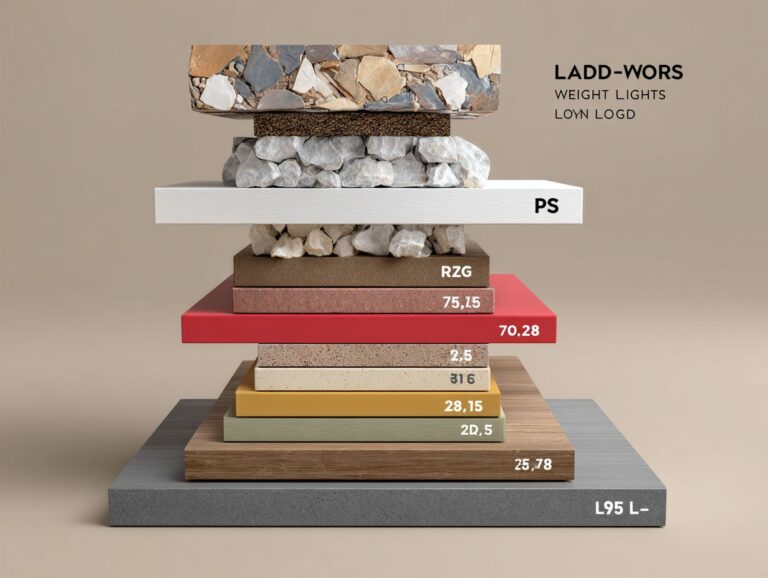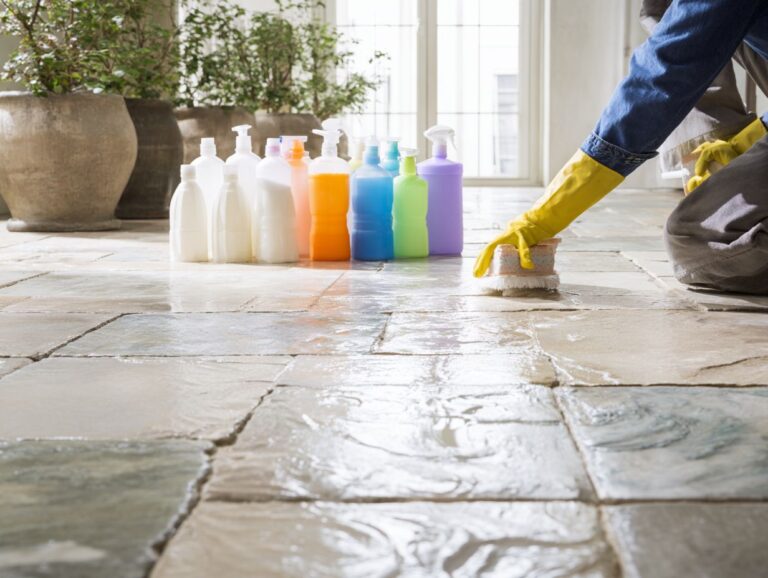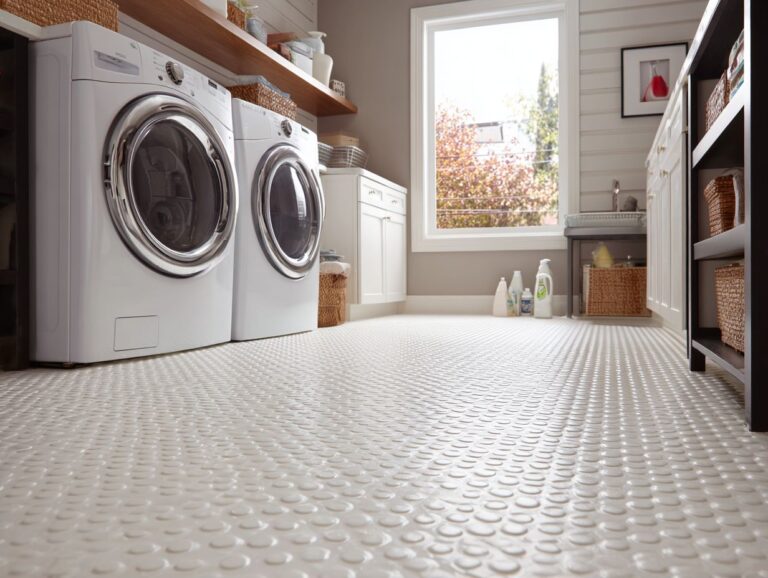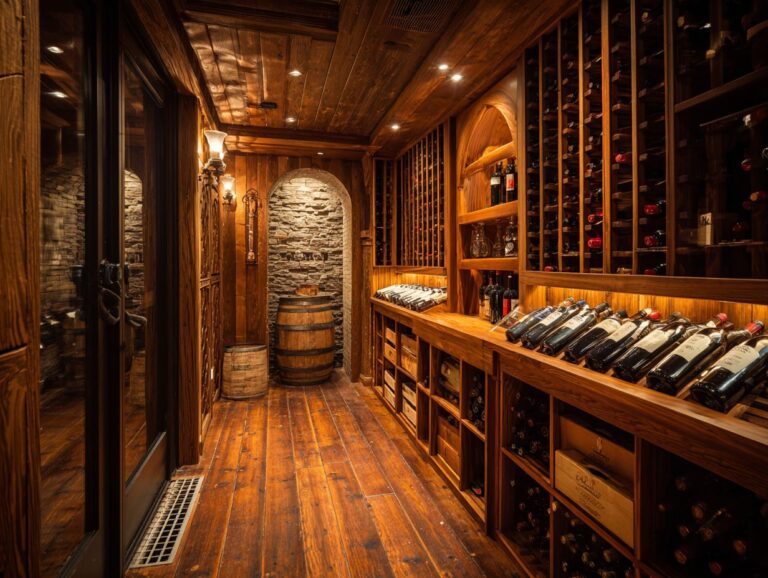Waterproof vs Water-Resistant Laminate – Key Differences
Knowing the differences between waterproof and water-resistant laminate flooring can significantly impact your home. Waterproof laminate and water-resistant laminate both protect against moisture. However, waterproof laminate has a stronger core that handles spills and humidity more effectively. In this article, we’ll explain the main differences between these two types of laminate, helping you choose the right one for your space.
Key Takeaways:
Contents
- Understanding Waterproof Laminate
- Understanding Water-Resistant Laminate
- Key Differences Between Waterproof and Water-Resistant Laminate
- Choosing the Right Option for Your Needs
- Laminate Flooring Market Statistics
- Frequently Asked Questions
- What is the difference between waterproof and water-resistant laminate?
- Can waterproof laminate be completely submerged in water?
- How is water-resistant laminate different from waterproof laminate?
- Which type of laminate is better for areas with high levels of humidity?
- Can water-resistant laminate be used in bathrooms?
- Is there a significant price difference between waterproof and water-resistant laminate?
Definition of Laminate Flooring
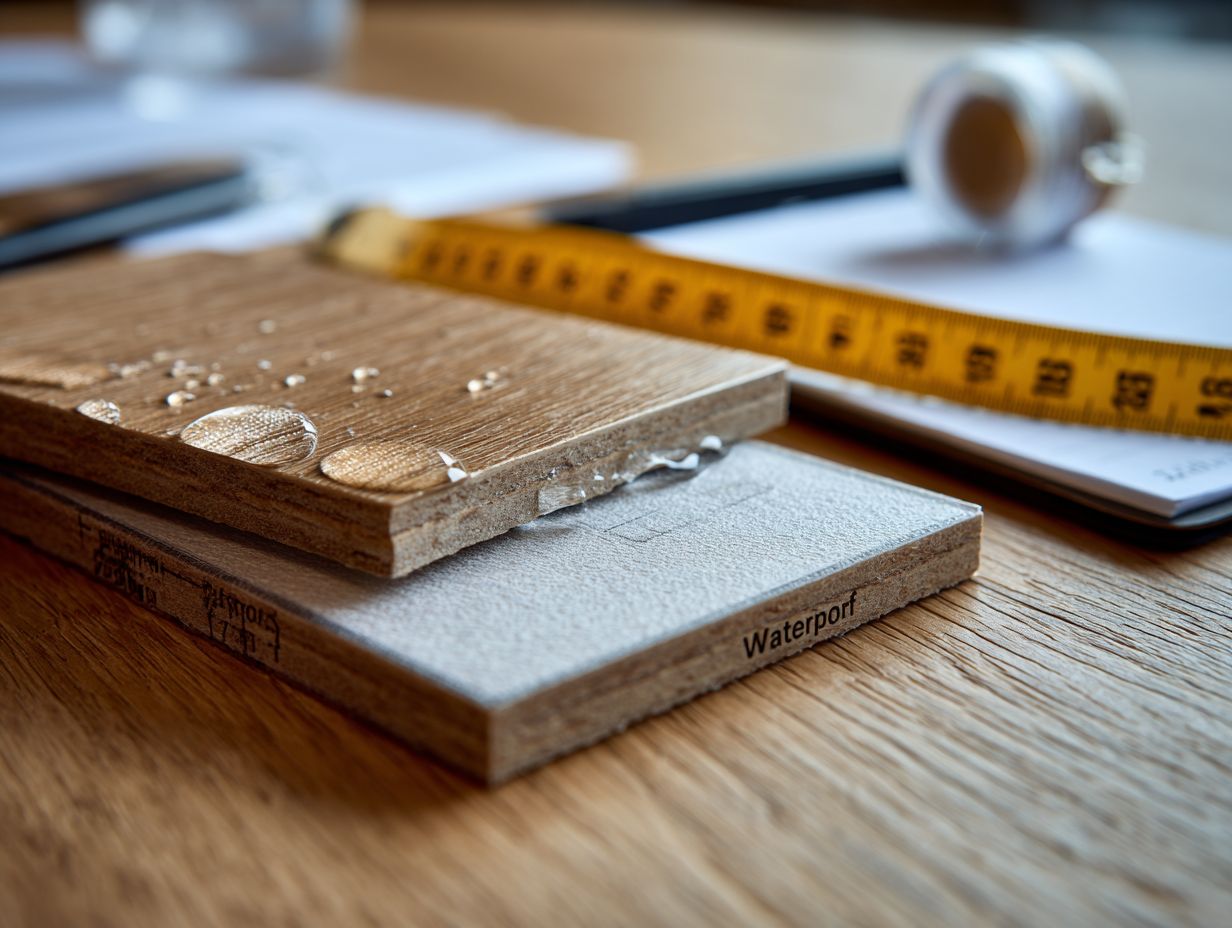
Laminate flooring is a man-made product consisting of multiple layers, such as a center layer of high-density fiberboard (HDF) and a top layer for strength.
This multi-layer construction allows laminate to imitate the appearance of wood or stone, providing an aesthetic that suits various styles. For example, the top layer has a high-resolution print that replicates natural textures, enhancing its realism.
Commonly used in residential properties, laminate is favored for high-traffic areas like living rooms and kitchens due to its scratch resistance and ease of maintenance. It costs less than hardwood, usually between $1-$4 per square foot, which makes it a good choice for homeowners on a budget.
Importance of Waterproof and Water-Resistant Features
Waterproof and water-resistant features are critical for laminate flooring, especially in moisture-prone areas like kitchens and bathrooms.
These features prevent water damage, which can warp and weaken flooring, impacting both aesthetics and safety.
For instance, a laminate with a high-density fiberboard core will absorb less moisture compared to standard options.
Brands like AquaGuard and Pergo offer waterproof choices that deal with spills and moisture effectively, making them ideal for these areas.
To protect your investment, consider applying a waterproof sealant around edges and joints during installation. This practice is akin to ensuring the right thickness in hardwood floors, as detailed in our comparison of hardwood floor thickness options.
Regular maintenance, such as immediate cleanup of spills, will also extend the life of your flooring.
Understanding Waterproof Laminate
Waterproof laminate gives better protection against spills and splashes, which makes it a great choice for different areas.
Definition and Characteristics
Waterproof laminate is specifically designed to resist moisture, characterized by a solid core that prevents water absorption.
Unlike traditional laminate, which relies on a fiberboard core that can swell when wet, waterproof laminate features a dense core made of polymer or specialized materials. This unique material prevents water from getting in, making it ideal for wet areas like kitchens and bathrooms.
For installation, use an acoustic underlay to improve water resistance, and look at brands like AquaGuard or Pergo Extreme for dependable products.
With proper installation, this type of flooring can last years without warping or damage, maintaining its aesthetic appeal in challenging conditions.
Materials Used in Waterproof Laminate
The main materials in waterproof laminate, like Stone Plastic Composite (SPC) and Wood Plastic Composite (WPC), make it more resistant to water damage.
SPC is primarily made of limestone and PVC, offering a sturdier, denser core that withstands impact and moisture. It features a protective wear layer that prevents scratches and stains.
On the other hand, WPC combines wood fibers with PVC, giving it a softer feel underfoot while still providing reasonable water resistance. Both materials are designed to resist changes in size, which is important in humid places.
Anti-microbial properties in certain laminates inhibit mold growth, ensuring a healthier space.
Benefits of Waterproof Laminate
Waterproof laminate flooring significantly reduces maintenance time and costs while providing lasting durability against water-related issues.
This flooring can last as long as 25 years with good maintenance, making it a wise choice for places with a lot of moisture, like kitchens and bathrooms.
Its easy maintenance is a major advantage-simply sweeping or mopping with a damp cloth suffices. Waterproof laminate is resistant to stains and scratches, ideal for households with pets.
Combining affordability (ranging from $1.50 to $4 per square foot) and resilience makes waterproof laminate a popular choice for both renovations and new constructions.
Best Applications for Waterproof Laminate
The versatility of waterproof laminate makes it suitable for various applications, from bathroom and kitchen flooring to living areas.
In bathrooms, waterproof laminate withstands spills and high humidity, ensuring longevity without warping.
For kitchens, its resistance to stains and scratches makes it a practical choice, particularly in areas with heavy foot traffic.
Living areas benefit from the aesthetic appeal combined with durability; for example, choosing a distressed wood look can hide minor imperfections while still being easy to clean.
When choosing laminate, pick options that can handle moisture. It is also a good idea to hire professionals to install it, so it is sealed correctly and lasts longer in tough conditions.
Understanding Water-Resistant Laminate
Laminate with water resistance provides moisture protection, so it’s suitable for areas with occasional spills or dampness. As mentioned, the construction of these flooring types is detailed in our article on Understanding Laminate Flooring – Construction & Benefits, highlighting their suitability for various environments.
Definition and Characteristics
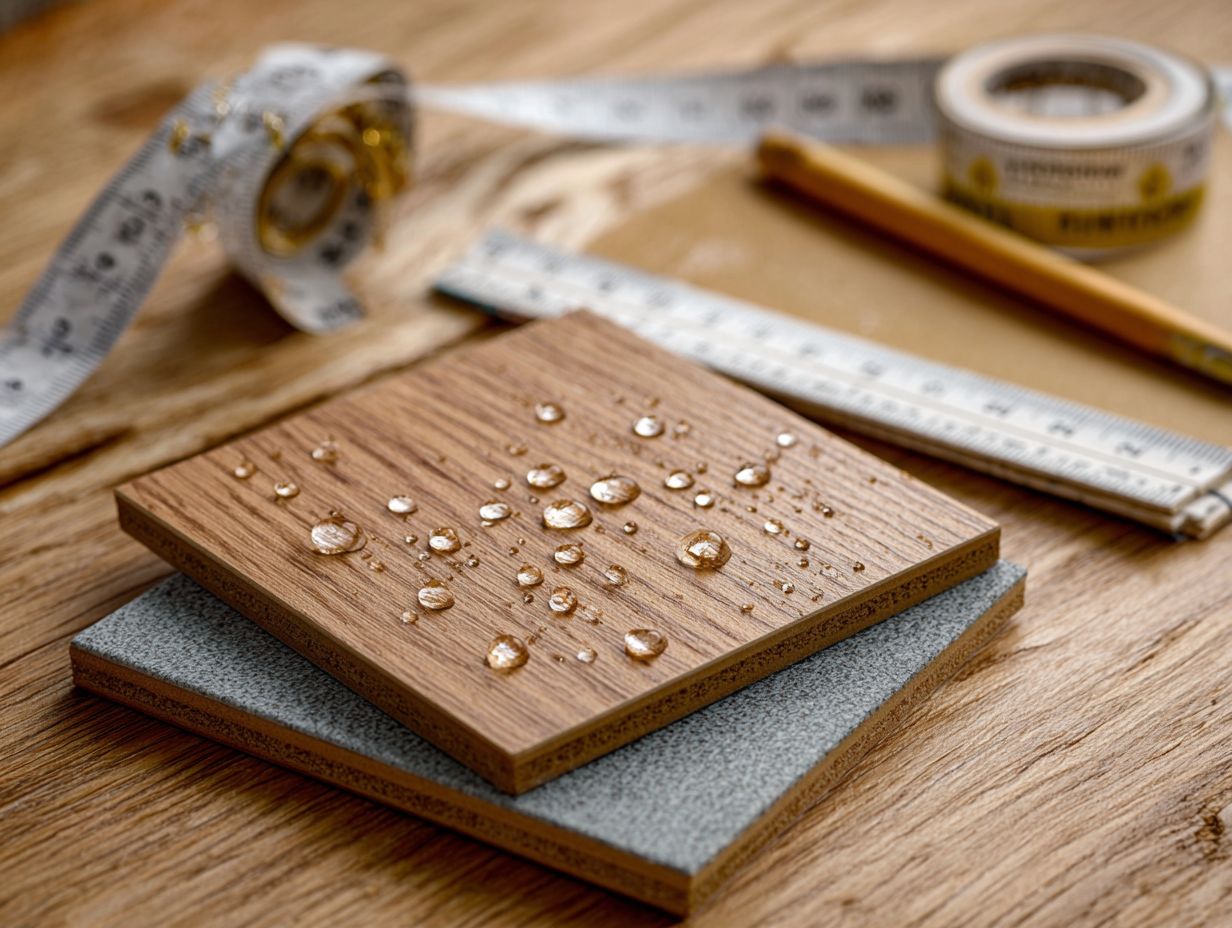
Water-resistant laminate is engineered to withstand limited moisture exposure, featuring a sealing layer to minimize water absorption.
This type of laminate is ideal for areas with occasional spills, like kitchens or dining rooms. While it offers good protection against moisture, remember that it is not fully waterproof.
For complete water protection in bathrooms, consider using a waterproof laminate that usually has a thicker core and better sealing. Examples include Aqua-Step and Pergo’s WetProtect line.
When picking laminate, consider your surroundings to find the best choice, balancing its ability to resist moisture and last long.
Materials Used in Water-Resistant Laminate
The composition of water-resistant laminate primarily involves high-density fiberboard, which provides structural integrity while resisting moisture to a degree.
Water-resistant laminate often features a melamine resin overlay that acts as a protective barrier against moisture and scratches. This coating makes surfaces stronger, which is perfect for areas prone to spills, such as kitchens and bathrooms.
For example, brands such as Pergo and Quick-Step offer laminates rated for high moisture resistance, often utilizing an integrated water-repellent technology.
Regular care, like keeping it dry and cleaning up spills quickly, extends the laminate’s life and keeps it working well in areas with a lot of moisture.
Benefits of Water-Resistant Laminate
The affordability and ease of maintenance of water-resistant laminate make it an appealing choice for budget-conscious homeowners.
This flooring resists moisture, so it’s good for kitchens and bathrooms. It looks like wood or tile but costs less.
Regular cleaning involves simply sweeping or mopping with a mild detergent, which can be done weekly. For the best results, choose Pergo or TrafficMaster for long-lasting quality and style.
With installation costs averaging $1.50 to $3 per square foot, homeowners can often complete projects well under traditional flooring budgets.
Best Applications for Water-Resistant Laminate
Water-resistant laminate is ideal for areas such as kitchens and entryways, where moisture exposure is common yet does not require full waterproofing.
For bathrooms, consider using a high-quality water-resistant laminate designed for humid environments, as it helps prevent warping. Brands like Quick-Step and Pergo offer options that withstand spills and high humidity.
In kitchens, opt for styles with a textured surface to improve slip resistance and still look good. Make sure the installation is done correctly with snug seams to reduce water leakage. Regularly applying a sealant can further extend durability and resistance to moisture, ensuring longevity in these susceptible areas.
Key Differences Between Waterproof and Water-Resistant Laminate
Knowing the main differences between waterproof and water-resistant laminate helps homeowners choose the right flooring for their needs.
Durability and Longevity
Waterproof laminate typically offers greater durability and longevity compared to water-resistant laminate due to its advanced moisture protection features.
For example, waterproof laminate can last over 25 years in high-moisture environments like bathrooms or basements, while water-resistant options may only hold up for 10-15 years under similar conditions.
The difference is mainly due to the construction materials; waterproof laminate often includes a core made from high-density fiberboard that resists moisture, while water-resistant options usually rely on surface coatings.
When selecting between the two, consider your installation area. If the area is likely to get spills or be damp, buying waterproof laminate helps it last longer and reduces the chances of bending or expanding.
Cost Comparison
While waterproof laminate tends to be more expensive due to advanced technology, water-resistant laminate remains a cost-effective option for many homeowners.
Waterproof laminate typically ranges from $3 to $7 per square foot, reflecting its superior material and technology that prevents water infiltration. In contrast, water-resistant laminate usually costs from $1.50 to $4 per square foot. It is a budget-friendly choice for areas that don’t get very wet.
Factors influencing costs include the thickness of the layers, brand reputation, and additional features like anti-scratch coatings.
For example, a high-quality waterproof option may be beneficial in kitchens or basements, while water-resistant laminate works well in living rooms or bedrooms with occasional spills.
Installation Process
The installation process for waterproof laminate may require specialized techniques compared to standard water-resistant laminate, impacting overall project timelines.
Waterproof laminate often involves a few additional steps for a proper seal. For example, you’ll need a moisture protection layer underneath, which might not be needed with regular laminate.
Installation typically takes 2-3 days for waterproof options due to the curing time for adhesives used around seams. In contrast, regular laminate can often be installed in just one day with click-lock methods.
Materials required for waterproof laminate include:
- Specialized glue
- Foam underlayment
While standard varieties typically require only the laminate planks and basic tools for cutting.
Maintenance Requirements
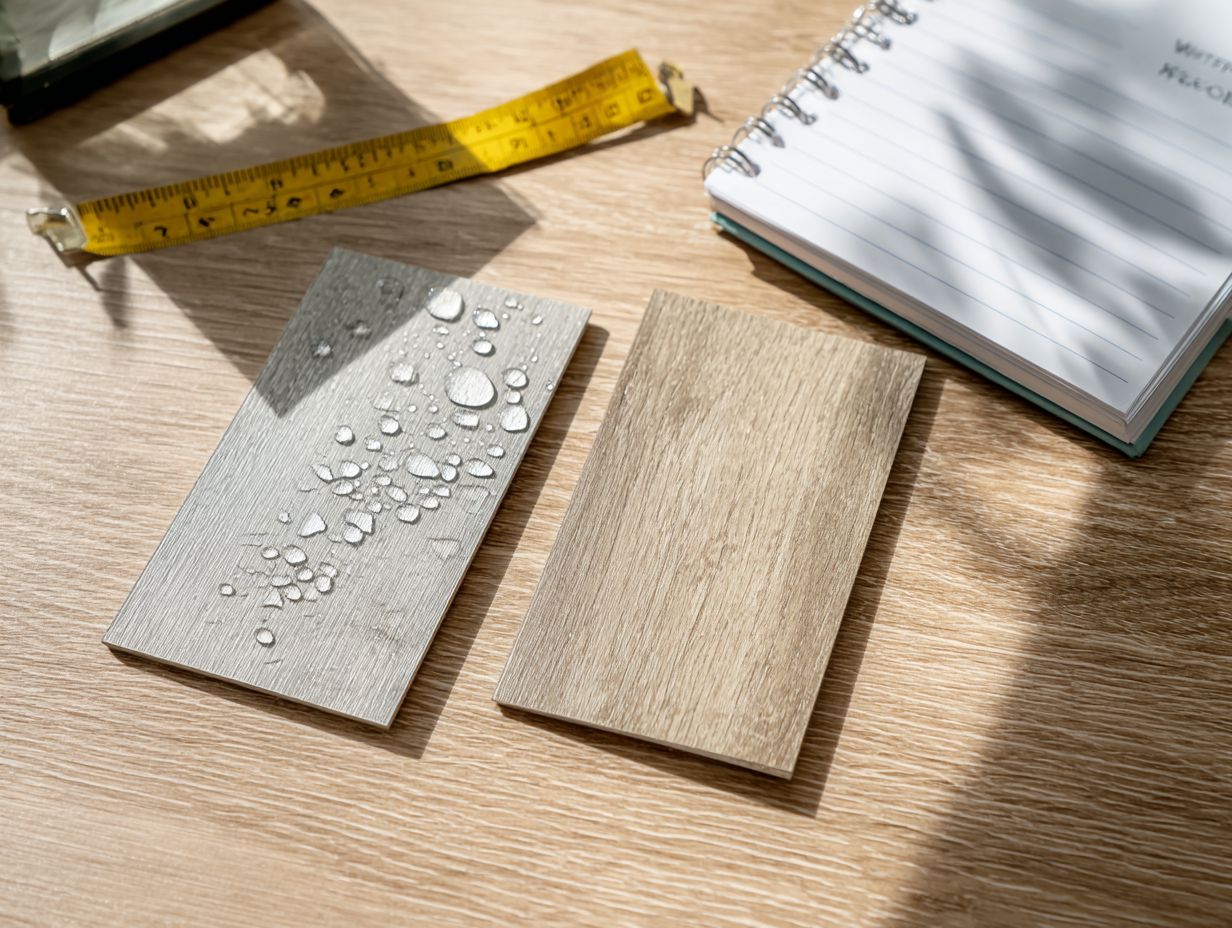
Waterproof laminate generally requires less maintenance than water-resistant laminate, which may need more frequent cleaning to prevent moisture damage.
To maintain waterproof laminate, a simple cleaning routine using a damp microfiber mop and a gentle cleaner is sufficient, typically performed once a week.
In contrast, water-resistant laminate requires extra attention; wipe spills immediately and clean with a pH-neutral cleaner every few days, especially in high-traffic areas.
For upkeep, inspect the seams for any signs of swelling or damage monthly, and reapply a sealant annually if recommended by the manufacturer.
These steps help items last longer and shield them from water damage.
Performance in High Moisture Areas
In high moisture areas like bathrooms, waterproof laminate outperforms water-resistant laminate, preventing long-term damage from spills.
Waterproof laminate has a strong core and a surface that blocks water, making it great for places with a lot of moisture.
For instance, brands like Pergo Outlast+ and Aquatread offer products specifically designed for wet spaces, with performance warranties up to lifetime against moisture damage.
In contrast, water-resistant laminate, while suitable for occasional spills, often fails in sustained moisture exposure, leading to warping and mold growth.
Therefore, for applications like shower areas or laundry rooms, investing in waterproof options is essential to maintain durability and aesthetics.
Choosing the Right Option for Your Needs
Picking the best laminate flooring needs you to think about your particular space, how much you want to spend, and how you prefer to care for it.
Factors to Consider
When selecting laminate flooring, consider factors like moisture exposure, foot traffic, aesthetic preferences, and budget constraints.
It’s important to consider moisture. For very humid places like basements, choose waterproof laminate. In less humid areas, water-resistant options might be enough.
Foot traffic impacts durability; choose higher AC ratings for busy households.
Aesthetic preferences play a key role; browse samples to find designs that match your decor.
Budget constraints should guide your decisions-waterproof laminates generally cost more but can save money long-term by avoiding replacement costs.
Weigh these aspects based on your lifestyle to make an informed choice.
Common Misconceptions
Many homeowners mistakenly believe that water-resistant laminate is as effective as waterproof options, leading to potential flooring issues.
Water-resistant laminate can handle minor spills and humidity but isn’t suitable for areas exposed to standing water, like bathrooms.
On the other hand, waterproof laminate is designed to withstand significant moisture without warping. For example, brands like AquaGuard provide a fully closed surface, which makes them perfect for basements and kitchens.
When selecting, think about how much moisture is in your area; if spills happen often, buy waterproof options to make them last longer and prevent expensive fixes. Knowing these differences can help you choose wisely for your home.
Summary of Key Points
To recap, waterproof laminate excels in high moisture areas, while water-resistant laminate offers a cost-effective solution for lower moisture environments.
When considering laminate options, it’s essential to assess their specific applications.
Waterproof laminate, designed for spaces like bathrooms and kitchens, features a dense core and sealed edges to prevent water damage.
In contrast, water-resistant laminate is suitable for areas with minimal exposure, such as basements or laundry rooms, effectively resisting spills.
Both choices can make your interior look better, but waterproof laminate protects more in wet areas, which might reduce repair costs later on.
Laminate Flooring Market Statistics
Laminate Flooring Market Statistics
Market Trends and Growth: Volume and Growth Projection
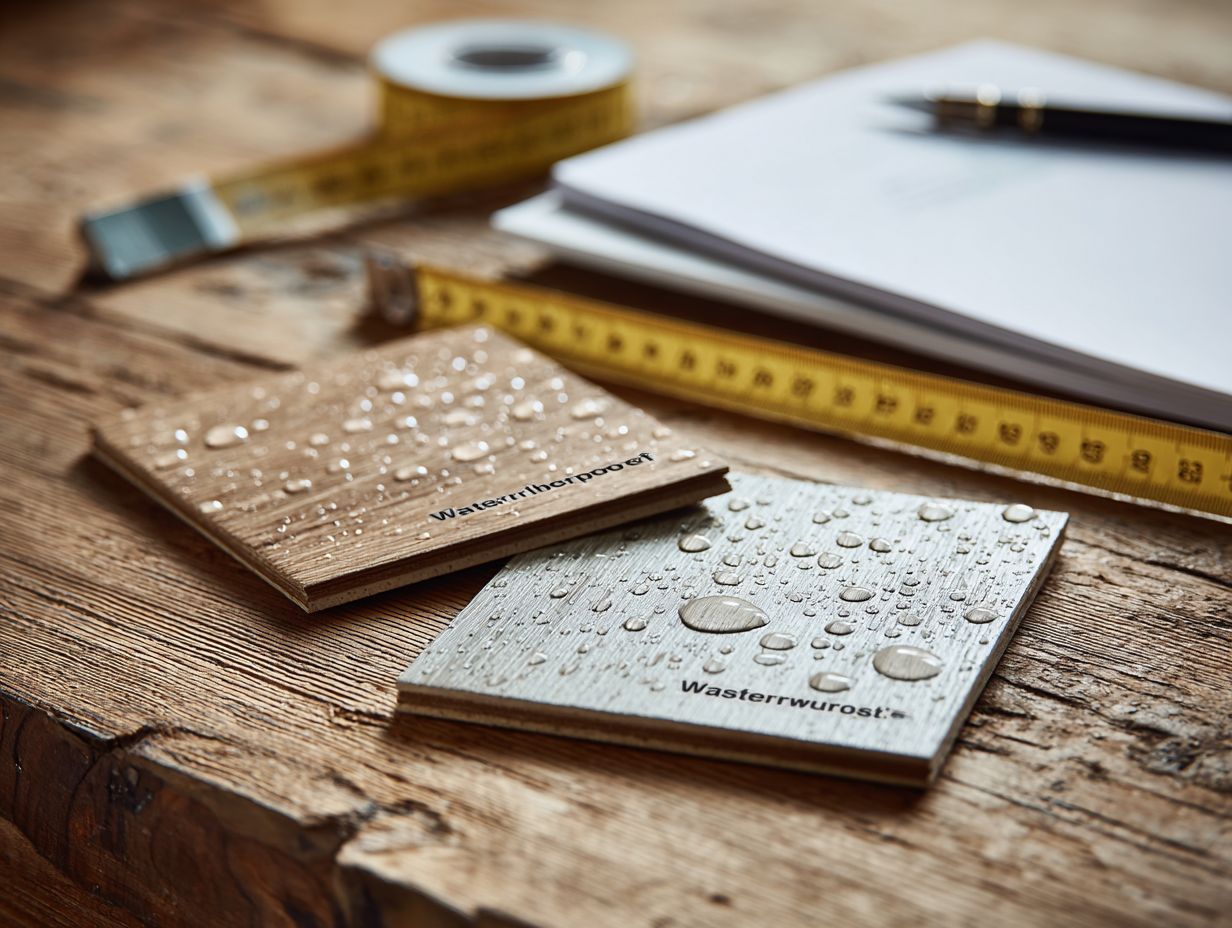
Market Trends and Growth: Market Segmentation
The Laminate Flooring Market Statistics give an overview of the current situation and expected trends in the laminate flooring market. The data shows changes in sales, volume, and market segments, providing a complete view of the challenges and opportunities in this market.
Market Trends and Growth indicate a notable decrease in sales and market share. In 2023, sales decreased by 9.8%, with a slight improvement in 2024 as the decline moderated to 7.5%. The market share in flooring sales also saw a small reduction from 5.0% in 2023 to 4.8% in 2024. These numbers indicate a market where laminate flooring is becoming less popular compared to other types of flooring. This change might be because people’s tastes are changing or because other materials are improving.
The Volume and Growth Projection section shows a significant decline in volume, particularly in 2023, with an 11.7% drop, improving to a 4.8% decline in 2024. Despite these short-term setbacks, the compound annual growth rate (CAGR) for 2025-2033 is expected to be 2.71%. This indicates potential recovery and growth driven by factors such as technological advancements in laminate flooring production or increased consumer awareness of its benefits relative to cost.
- Market Segmentation: The Residential Replacement Sector dominates the market, accounting for 80% of the share, reflecting the demand for renovation and upgrades in existing homes. However, the market share in new home construction has decreased from 17.2% in 2023 to 12.7% in 2024, pointing to a decreased preference for laminate in new builds, which might be attributed to trends favoring other materials perceived as more durable or aesthetically pleasing.
The laminate flooring market is dealing with difficulties, especially in holding its position against competitors and meeting changing consumer preferences. The projected growth rate indicates optimism for a turnaround, emphasizing the importance of innovation and strategic marketing to capture market opportunities, especially in the residential replacement sector.
Final Recommendations
For kitchens and bathrooms, waterproof laminate is recommended for optimal protection, while water-resistant laminate suits lower moisture areas like bedrooms and living rooms.
When choosing waterproof laminate for kitchens and bathrooms, look for products labelled as 100% waterproof, often featuring a specialized core that resists water damage.
High-quality brands like Mohawk or Shaw offer tiles and planks that can endure spills and humidity.
In drier places, consider using water-resistant laminate with a strong AC rating, such as TrafficMaster, as it combines strength and cost-effectiveness.
Make sure your chosen flooring comes with a solid warranty, preferably 15 years or longer, to promise lasting quality.
Frequently Asked Questions
What is the difference between waterproof and water-resistant laminate?
The key difference between these two types of laminate is the level of protection they offer against water damage. Waterproof laminate is completely impervious to water, while water-resistant laminate can withstand some exposure to moisture before becoming damaged.
Can waterproof laminate be completely submerged in water?
Yes, waterproof laminate can withstand being submerged in water without any damage. It is commonly used in areas with high levels of moisture, such as bathrooms and kitchens.
How is water-resistant laminate different from waterproof laminate?
Water-resistant laminate is designed to resist water penetration for a limited amount of time, while waterproof laminate is completely impermeable to water. Water-resistant laminate may still become damaged if exposed to standing water for an extended period of time.
Which type of laminate is better for areas with high levels of humidity?
Waterproof laminate is the better choice for areas with high humidity, as it provides a higher level of protection against moisture. Water-resistant laminate can be used in these areas, but you need to install and maintain it correctly to avoid water damage.
Can water-resistant laminate be used in bathrooms?
Yes, water-resistant laminate can be used in bathrooms as long as it is properly installed and maintained. However, waterproof laminate is the best option for bathrooms because it protects better against water damage.
Is there a significant price difference between waterproof and water-resistant laminate?
Typically, waterproof laminate may be slightly more expensive than water-resistant laminate due to its higher level of protection. However, the price may differ based on the brand and quality. It is important to consider the intended use and level of moisture exposure when choosing between the two options.
